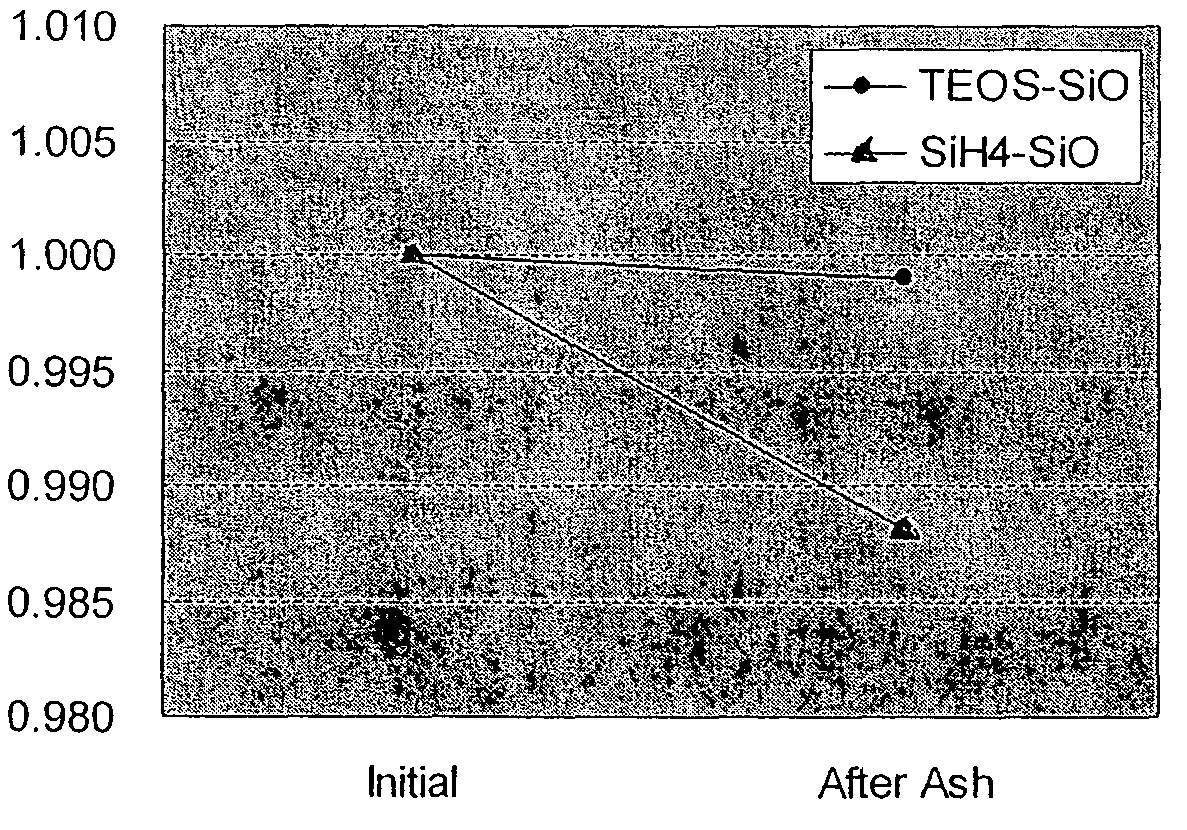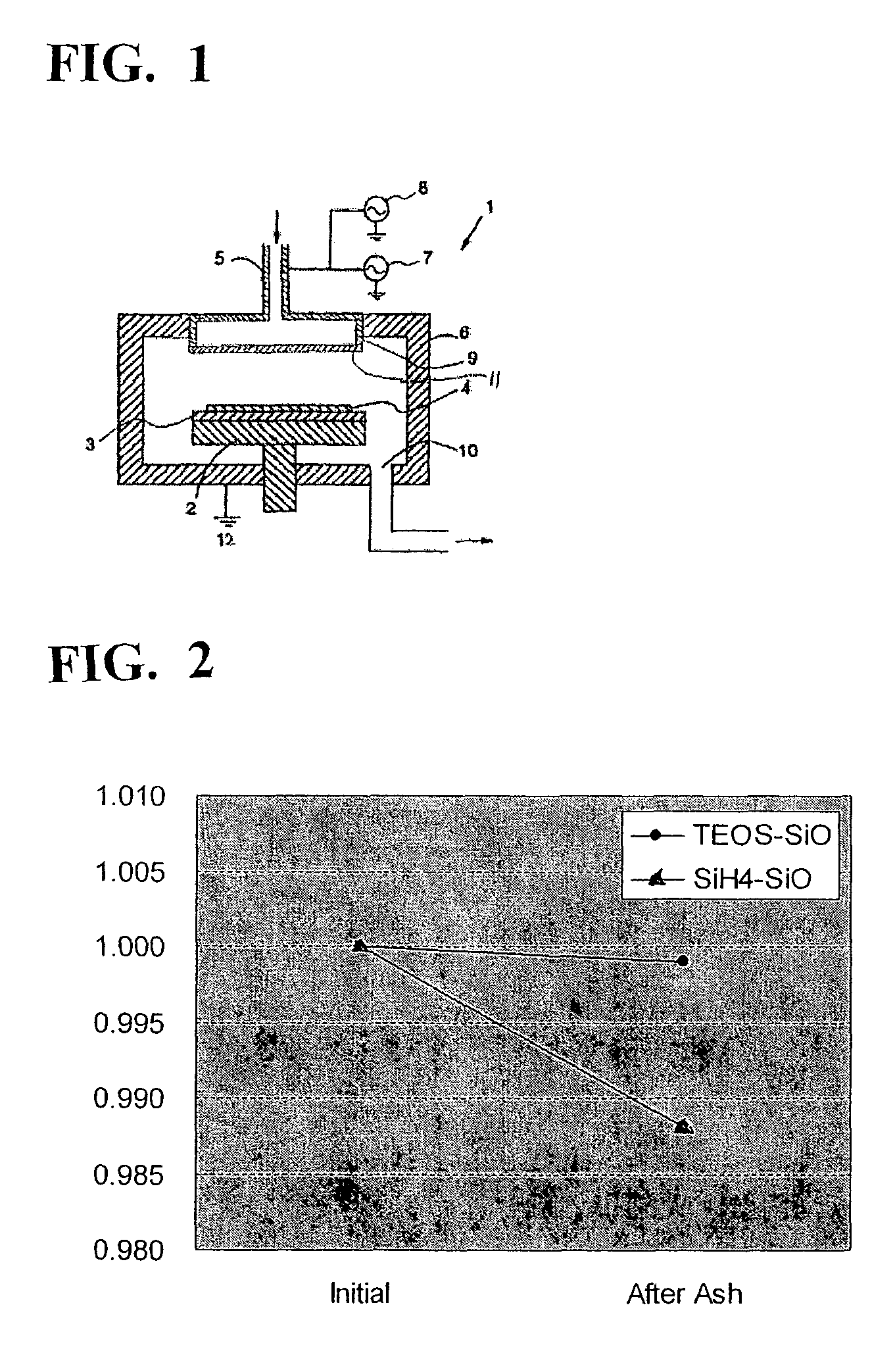Method of forming organosilicon oxide film and multilayer resist structure
a technology of organosilicon oxide and resist structure, which is applied in the direction of resistive material coating, superimposed coating process, liquid/solution decomposition chemical coating, etc., can solve the problems of low minuteness, poor ashing resistance, and limit the maximum temperature permitted, and achieve excellent ashing resistance, low cost, and high productivity
- Summary
- Abstract
- Description
- Claims
- Application Information
AI Technical Summary
Benefits of technology
Problems solved by technology
Method used
Image
Examples
example
[0035]In the example, the capacitively-coupled plasma CVD apparatus (Eagle®-12 by ASM Japan K. K.) shown in FIG. 1 was used.
[0036]Film Forming Conditions Used in Example
[0037]A parameter test was conducted under the following conditions:
[0038]Organosilicon Oxide Film
[0039]Silicon source gas: TEOS (60 to 80 sccm)
[0040]Oxidizing gas: O2 (1,400 to 2,600 sccm)
[0041]Inactive gas: He (300 to 1,000 sccm)
[0042]Total pressure: (350 to 450 Pa)
[0043]Substrate temperature: (200° C.)
[0044]Interior wall temperature: (120° C.)
[0045]Showerhead temperature: (100° C.)
[0046]Inter-electrode distance: 10 mm
[0047]First RF power supply (H-RF): 13.56 MHz (0.13 to 0.27 W / cm2)
[0048]Second RF power supply (L-RF): 430 kHz (0.44 to 0.58 W / cm2)
[0049]Substrate: ø300-mm silicon substrate
[0050]Organosilicon oxide film: 2 reference film thicknesses of 100 nm and 400 nm
[0051]Evaluation Items
[0052]Refractive index (−), film formation speed (nm), film thickness distribution (±%), stress (MPa), and plasma damage[0053](S...
PUM
| Property | Measurement | Unit |
|---|---|---|
| temperature | aaaaa | aaaaa |
| frequency | aaaaa | aaaaa |
| frequency | aaaaa | aaaaa |
Abstract
Description
Claims
Application Information
 Login to View More
Login to View More - R&D
- Intellectual Property
- Life Sciences
- Materials
- Tech Scout
- Unparalleled Data Quality
- Higher Quality Content
- 60% Fewer Hallucinations
Browse by: Latest US Patents, China's latest patents, Technical Efficacy Thesaurus, Application Domain, Technology Topic, Popular Technical Reports.
© 2025 PatSnap. All rights reserved.Legal|Privacy policy|Modern Slavery Act Transparency Statement|Sitemap|About US| Contact US: help@patsnap.com


